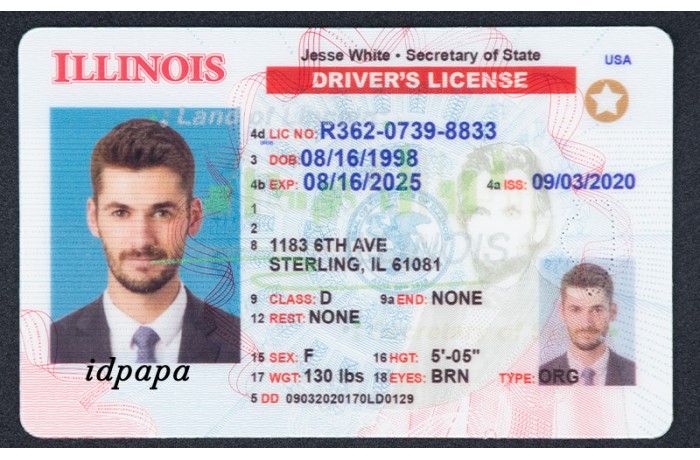
Gaining access to exclusive clubs often requires a seemingly simple piece of plastic: a valid ID. But what if you don't have one? For some, the lure of bypassing age restrictions or assuming false identities can be tempting. This leads to a dangerous underground where copyright IDs are crafted with increasing sophistication.
These fake identifiers are no longer just crudely tampered copies. With advancements in technology, making a copyright readable is becoming a reality.
The process involves intricate features that mimic the structure of genuine IDs. High-tech scanners are used to analyze real IDs, and this information is then employed into the design of copyright.
- Specialized software are used to generate convincing holograms, barcodes, and magnetic strips.
- High-quality printing ensure that the ID looks authentic under scrutiny.
- Protective elements are often replicated with surprising accuracy.
While these advances make it increasingly difficult to detect copyright, law enforcement agencies are continually evolving their techniques. The fight against counterfeiting is a constant arms race, with both sides pushing the boundaries of technology.
It's important to remember that possessing or using a copyright is a serious offense with significant repercussions. The allure of bypassing restrictions shouldn't outweigh the risks involved.
Dissecting a copyright
copyright identification documents have become increasingly sophisticated, making it difficult for scanners to distinguish them. These forged IDs often imitate the protective measures of genuine documents, employing superior printing processes. They may even include laser engravings that seem authentic to the casual glance.
To evade scanners, counterfeiters often embed microchips that contain altered information. They may also modify the ink formula of the paper used to manufacture the ID, how long does scannable fake ids take making it hard for scanners to interpret the information.
- Furthermore, some copyright IDs use ultraviolet ink that are only visible under blacklight.
- Counterfeiters also continuously evolve their techniques to outpace security measures.
copyright Making: Homebrew Edition, Is it Scannable?
So you wanna craft/forge/build yourself a copyright, huh? Thinkin' you can whip/hack/engineer up somethin' that'll actually pass/fool/trick those scanners at the club. Look, it ain't impossible to design/make/fabricate a copyright at home, but let's be real here - makin' it scannable/readable/detectable by security systems/software/checks? That's where things get tricky/complicated/challenging.
- You're dealing/battling/up against some seriously high-tech hardware/equipment/gadgets these days, kid.
- Security features/codes/measures are gettin' more sophisticated/advanced/complex by the day.
- Even if you manage to replicate/copy/duplicate the basic design/layout/structure, the tiny details/nuances/variations can throw it off.
Bottom line: don't get your hopes up about makin' a foolproof replica/copyright/fake with just a printer/scanner/computer. It ain't worth the risk, trust me. Stick/Hold/Stay to legal ID options, or you might end up in a sticky/messy/unpleasant situation.
Inside the Tech: How Scannable copyright Slay the System
These days, forging an ID isn't just about a clumsy Photoshop job anymore. The rise of scannable copyright is a whole new ball game. Masterminds are leveraging cutting-edge technology to create fraudulent documents that frequently pass even the most sophisticated scanners. Think high-resolution photos, embedded microchips, and even UV inks designed to mimic the real deal.
- Security systems, once thought foolproof, are now facing this onslaught of technological sophistication.
- The risks are high. These scannable IDs fuel a host of illegal activities, from identity theft to underage drinking and even drug trafficking.
It's a constant battle between security measures and those seeking to exploit them. The question remains: will technology eventually catch up the ingenuity of copyright creators?
Unmasking the Tech : Deciphering Scannable copyright Technology
The sphere of fake identification technology is constantly evolving, with advanced methods emerging to thwart security measures. One remarkably troubling trend involves the production of scannable copyright that can effortlessly fool even the most stringent scanners. These ill-gotten documents often employ state-of-the-art printing techniques and materials that mimic the genuineness of real IDs, making them increasingly difficult to distinguish.
- Understanding the scientific underpinnings of these copyright is crucial for developing effective countermeasures.
- This exploration will probe into the materials used, the manufacturing processes involved, and the complexity of the designs.
- Finally, this knowledge will empower authorities to mitigate the growing threat of scannable copyright and protect against their detrimental consequences.
Unmasking the Fraud: A Look at Scannable copyright Production
The world of bogus IDs is constantly evolving, with ingenious techniques used to manufacture documents that can easily pass inspection. Masterminds are increasingly relying on state-of-the-art methods to duplicate IDs that are nearly impossible to the naked eye.
Security measures are constantly being refined to combat this alarming threat, but the struggle between official identification and illegitimate documents is an ongoing contest.
- Lawbreakers often take advantage of vulnerabilities in identification systems to manufacture copyright that are challenging to identify.
- High-resolution scanners are commonly used in the fabrication of scannable copyright, enabling criminals to produce documents that are nearly indistinguishable to real ones.
- Government organizations are making significant efforts to address the threat of scannable copyright through improved security measures, public awareness campaigns, and severe punishments for those involved in their production.